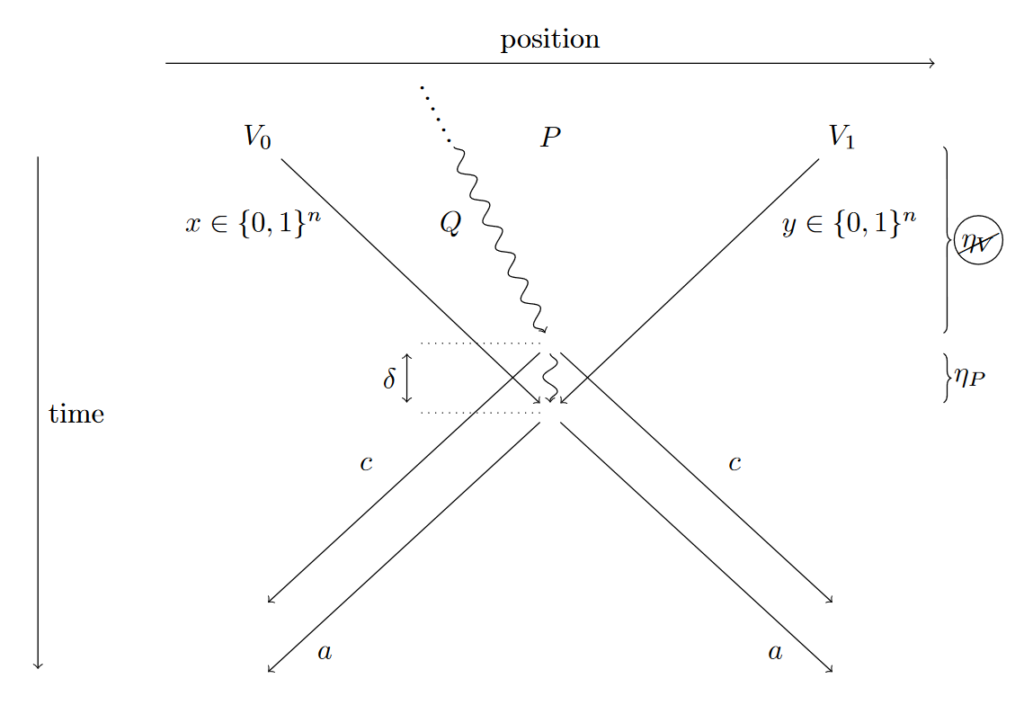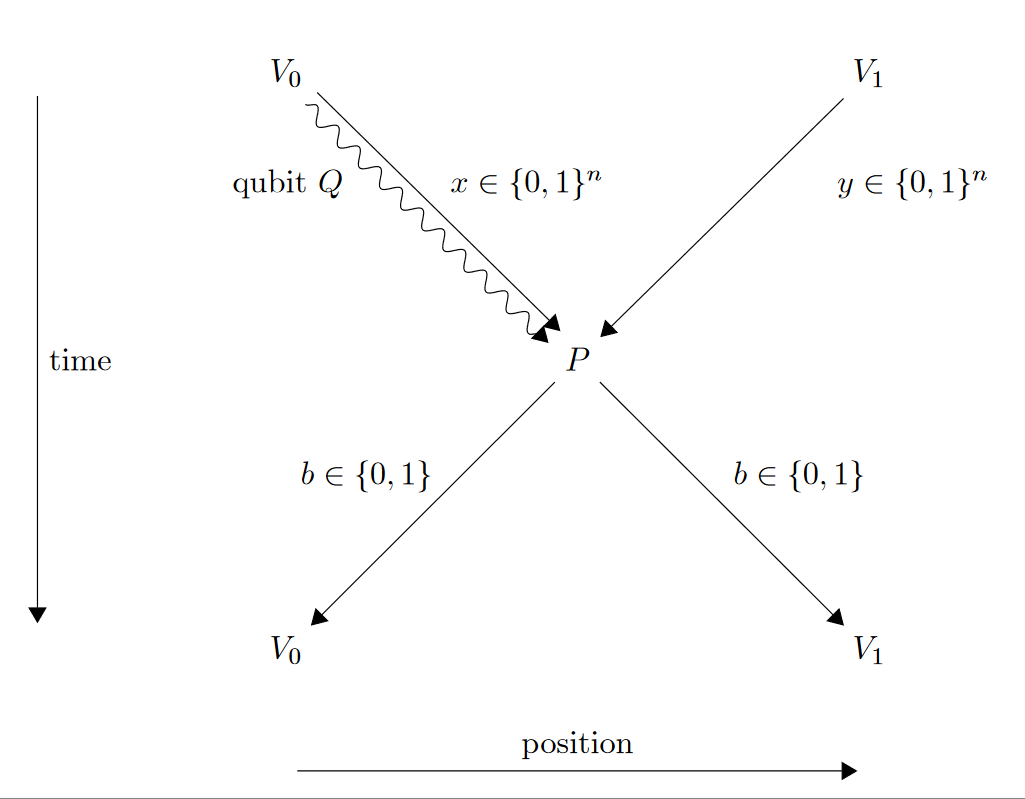
Making Existing Quantum Position Verification Protocols Secure Against Arbitrary Transmission Loss
with Rene Allerstorfer, Harry Buhrman, Matthias Christandl, Llorenç Escolà-Farràs, Florian Speelman, and Philip Verduyn Lunel
A big challenge on the way towards practical protocols for secure quantum position-verification is the fact that in experimental setups e.g. using fiber optics, most of the photons sent get lost. That can compromise the security of protocols of interest. We prove that adding a commitment step, we can prove security for a large class of protocols against arbitrary photon loss, thereby exhibiting the first protocol that is both secure against photon loss, secure against entangled attackers, can allow the quantum information to travel slowly, and is simple for the honest parties. This makes the protocol an ideal candidate for experimental implementation. [arXiv]

A single-qubit position verification protocol that is secure against multi-qubit attacks
with Matthias Christandl and Florian Speelman
Imagine that you sit in front of a computer and look at a website that looks like the website of your bank. But how can you be sure that it is genuine? If you could verify that the server is indeed in the basement of the bank, you could stop worrying. This is the idea behind position-based cryptography: The position of a party is used as a credential. Unfortunately, secure position-verification, the fundamental building block of position-based cryptography, is classically impossible. However, quantum protocols for this task exist. We put forward the hitherto simplest such protocol and prove that it is secure as long as the attackers have at most an amount of qubits linear in the classical information sent during the protocol, while the honest parties only need a single qubit. Since classical bits are much easier to control than qubits, this makes the protocol secure in practice. [journal] [arXiv]